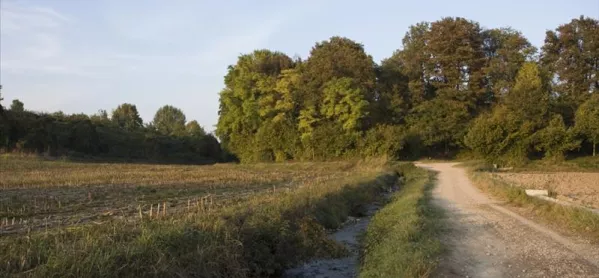
- Home
- Two in five small schools fear closure, heads warn
Two in five small schools fear closure, heads warn

Failure to protect England’s small schools would mean the death of many local communities, headteachers are warning.
Speaking at NAHT’s primary schools conference in London today, Paul Whiteman, general secretary of NAHT, said: “Small schools are at the heart of our local and rural communities.
“But as one of the groups hit hardest by budget cuts, for thousands of small schools the future remains uncertain.”
The nation’s small schools, those with lower pupil numbers, are under threat amid intense financial pressures, the association is warning.
Ofsted: Small schools must meet our curriculum standard
Opinion: ‘Spare a thought for heads of small schools’
Background: Small schools need more curriculum support, says Ofsted
Exclusive: Remote schools facing ‘educational isolation’ new report warns
A survey of its members suggests that more than two in five (42 per cent) of the 365 small-school leaders questioned said they are concerned about the possibility of the closure of their school, with a lack of funding cited as the main reason for this.
This is followed by low or fluctuating pupil numbers.
Seven in 10 (70 per cent) of those polled said they have cut investment in equipment for their school to try and balance budgets, while moves include cutting the numbers or hours of teaching assistants and reducing maintenance budgets.
Clem Coady, headteacher of Stoneraise School, a small rural school near Carlisle, said one of the main issues facing small schools is the difficulty of remaining viable long-term.
Core school funding is awarded on a per pupil basis, meaning that smaller schools, with less pupils, get less money.
It is understood that £25 million in additional funding is set aside for small and remote schools through the National Funding Formula.
Mr Coady, whose school currently has 120 pupils, said: “All schools have the same starting costs before children come in through the door.
“We’ve all got a building to heat and to run and to maintain. We’ve all got admin costs to do, we’ve all got health and safety cost implications.
“We’ve got all of those things to do before we start looking at providing the education for the pupils.”
In addition, he says, schools often have to contribute financially to areas such as specialist help for children with special needs Mr Coady said if his school did not exist, pupils as young as four would be forced to travel miles each day to get to schools in the city.
The closure of small schools, he says, “would be the death of many rural communities”.
He added: “A number of rural schools have also become the village hall for Cubs, Brownies - we’ve held Cubs events here at our school, they can use our facilities which they might not be able to get elsewhere.
“We also open up throughout holidays and we allow our facilities to be used by voluntary groups to set up childcare facilities for people in the community who need childcare through the holidays.”
Mr Coady went on to say: “A lot of people forget that schools are often the last bit left in a lot of our rural communities.
“The post offices have gone, the pubs have gone, the school building is often the last building left which glues the community together, so whether that’s a village fete in the summer, a chance where all the community can get together, these are the great things that rural,
community-based schools provide.
“If we don’t protect them, they’ll come to an end, and in effect they’ll end a lot of rural communities.”
Judy Shaw, NAHT president and head of Tuel Lane Infants, a small school in Sowerby Bridge, West Yorkshire, fears a situation where people think that “small schools are not viable and therefore we should be amalgamating with other schools or joining multi-academy trusts and everything on a cost-saving basis”.
Small schools are a “vital” part of the community, she argues, and it is not just about the use of their buildings.
“If you think about a community and we often say communities are under threat these days, if you define it really basically, a community being a group of people who share common interests, attitudes and responsibilities, the first connections between families in a neighbourhood, are often formed at school gates.”
She argues: “It’s that central point of a community where people come together.
“If people never come together you haven’t got a community got a bunch of buildings with families living separate lives.
“The school is the hub and heart of a community, not just its building and who uses it. It’s the joining together of people when they come and build those friendships.”
There are 3,475 small schools in England, the NAHT calculates, based on the numbers of schools with less than 150 pupils.
The union suggested that there could be around 1,459 small schools nationally where possibility of closure is a concern, this is based on 42 per cent of survey respondents saying they are concerned about this.
Register with Tes and you can read five free articles every month, plus you'll have access to our range of award-winning newsletters.
Keep reading for just £4.90 per month
You've reached your limit of free articles this month. Subscribe for £4.90 per month for three months and get:
- Unlimited access to all Tes magazine content
- Exclusive subscriber-only stories
- Award-winning email newsletters
You've reached your limit of free articles this month. Subscribe for £4.90 per month for three months and get:
- Unlimited access to all Tes magazine content
- Exclusive subscriber-only stories
- Award-winning email newsletters



